
Police Tape 101: Everything You Need to Know
Police tape, commonly known as crime scene tape, is an important tool used by law enforcement to secure…
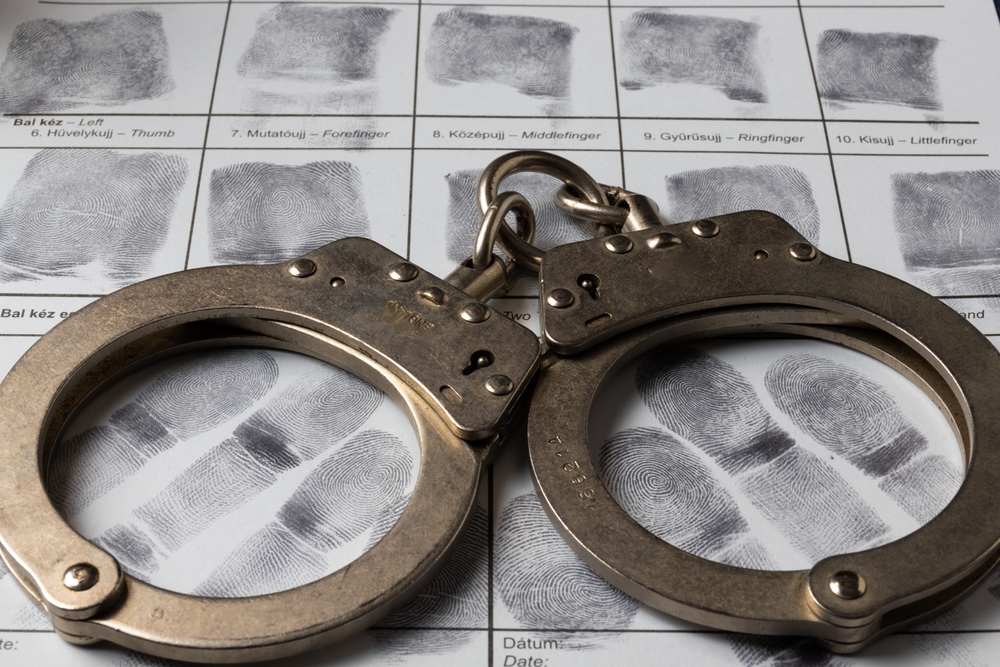
There’s not a great deal of magic regarding handcuffs, which are pretty straightforward in design and purpose.
Handcuffs are merely a tool to restrict a person’s arms by linking two “bracelets” around each of the subject’s wrist.
Handcuffs are only intended for temporary use.
There are some types of handcuffs that stand out from the rest, as I’ll describe in more detail.
I will also tell you what type of handcuffs I prefer and why.
Law enforcement officers and security guards should know a little about what’s on the market.
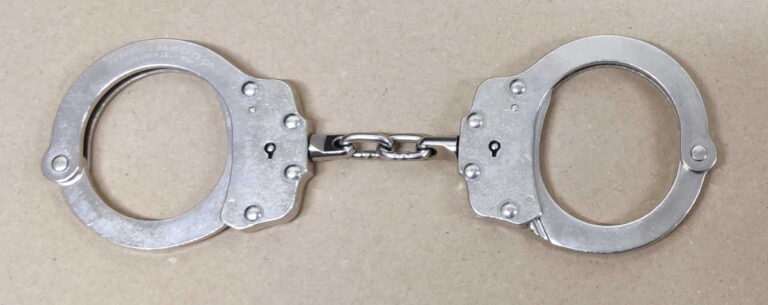
These are the traditional handcuffs you see everywhere.
Chain handcuffs consist of two parts that are joined together in a link.
Each part has a rotating arm that engages with a ratchet that prevents it from opening once it is closed.
This prevents the arrested person from escaping without using handcuff keys.
Areas of use:
For use in daily service. Chain handcuffs are very versatile and can be used in most situations.
You can find chained handcuffs at Amazon.com here.
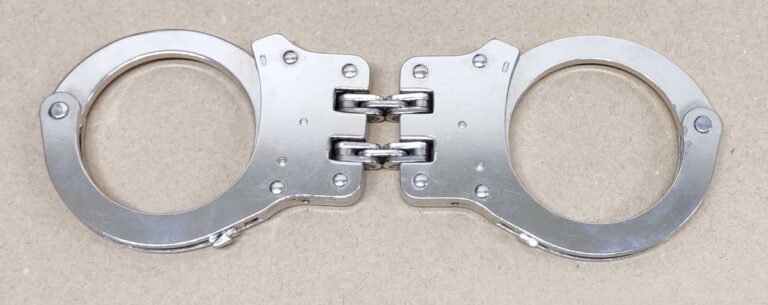
Hinged handcuffs have the same locking mechanism, but instead of a chain, the handcuffs are connected only by a hinge.
This means that only one joint allows movement when attached to the wrists.
Finding out what hinged handcuff to choose isn’t easy. To help you decide, I’ve written an article about the best hinged handcuffs here.
Areas of use:
Can be used daily, but you must be aware that they can be challenging to use sometimes.
These can also be used if the situation requires some extra control of the person.
You can find hinged handcuffs at Amazon.com here.
Rigid handcuffs have the same locking mechanism as the other handcuffs mentioned above.
They have a lockable link between the two halves, just like hinged handcuffs, which makes the rigid handcuffs impossible to move.
These handcuffs qualify as maximum use of force and should be used only if it is strictly necessary.
Areas of use:
Can be used daily. Remember what challenges these handcuffs can provide.
They are very useful when it is necessary to assert additional control of the person, for example, if you are going to court or during prisoner transport.
This guide goes more in-depth on what handcuffs are made of.
These cuffs are made of plastic, with the same principle as cable ties.
Another name for this type of handcuff is flex cuffs.
There are disposable and reusable restraints, although it is easy to make them at home with ordinary cable ties.
To obtain a pair of such plastic handcuffs, I still recommend buying ready-made versions, as these are easier to use and more reliable.
Let’s look at the advantages and disadvantages of using these:
Areas of use:
Can be used in daily service, but this is not recommended.
They are, however, instrumental in riots and mass arrests.
Remember to watch the prisoners so no one helps another loosen the handcuffs.
I’ve placed some in my police patrol bag along with other gear.
Find Zip Tie Handcuffs at Amazon.com here
Thumbcuffs are rarely used.
I have only used them once, during an arrest in which I had used my two other cuffs, and there was still a third person in the room:
By coincidence, a couple of thumbcuffs were on the kitchen table, so I used them on the third person.
After that, I bought myself a pair of thumbcuffs to always have with me.
However, I’ve never tried to use these on someone actively resisting arrest.
Read our review on the best thumbcuffs here.
Areas of use:
Not recommended for everyday use.
They are good to have as a backup if you have used all of your other handcuffs.
They can also be used in combination with regular handcuffs to provide additional control over the arrested.
Find Thumbcuffs at Amazon.com here.
These are not quite types of handcuffs, yet they are an excellent tool to keep control of the arrested.
There are a wide variety of leg cuffs, including some that are based on the same principle as handcuffs with chains.
The difference is that they are a little bigger, so it’s possible to get them around the ankles.
The links are also longer so that prisoners can walk but not run while wearing the cuffs.
This makes the subject’s mobility severely restricted.
Areas of use:
They are not suitable for use in an arrest situation but should be used after you have gained control of the prisoner with regular handcuffs.
These may be used if a higher level of security is required.
They are too big to carry in your belt and thus must be left in the car.
Today’s handcuffs come with a double locking mechanism. That means that the handcuff has two locks.
One lock is designed to prevent the person from removing the handcuffs.
The second lock prevents handcuffs from tightening around the person’s wrist and prevents intentional or accidental injury.
In this way, we avoid accidental injury or pain.
Single-lock handcuffs have only one locking mechanism, which prevents the prisoner from opening up the handcuffs.
Without a double lock, some people might intentionally tighten the handcuffs so that you loosen them and give them a chance to harm you and escape.
If you have only single-lock handcuffs, you should find the angle grinder, cut them up right away, and buy a pair of double-locks!
Be sure to keep your handcuffs well maintained, and you will keep them for years. Find some tips in this guide on handcuff maintenance.
Most handcuffs come with a universal handcuff key.
This makes it easy when your fellow police officers bring your prisoner to the police station with your handcuffs. They have the same key and can unlock them.
At the same time, standard handcuff keys can pose a danger:
Anyone can get hold of a universal handcuff key, and they’re so small that it’s easy to hide somewhere on the body.
Check my article about hidden handcuff keys here
Therefore, you can’t let your guard down completely once the arrested is in handcuffs.
Carefully conduct a body search and ensure that the prisoner doesn’t have a separate key.
High security handcuffs (Maximum security handcuffs) come with special keys.
These are often used when there are high-risk prisoners to be transported because they are impossible to pick and thus provide safety for officers.
I will delve more deeply into specific handcuffs in other articles. Still, I can reveal that I prefer regular chained handcuffs daily, as these are the most useful in most situations.
I will delve more deeply into specific handcuffs in other articles. Nevertheless, I can reveal that I prefer regular chained handcuffs daily, as these are the most useful in most situations
Many law enforcement officers prefer to wear at least two pairs of cuffs.
Some have to pair of chained handcuffs, and others have the same setup as I have.
What types of handcuffs do you prefer?
Did I miss any kinds in this guide?
Let me know in the comments below!

Police tape, commonly known as crime scene tape, is an important tool used by law enforcement to secure…
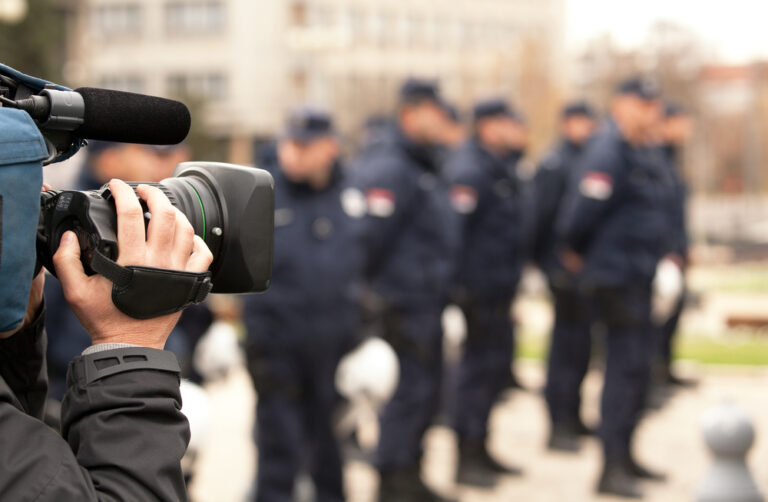
The police are called daily regarding various incidents of public interest. It is our responsibility to provide the…
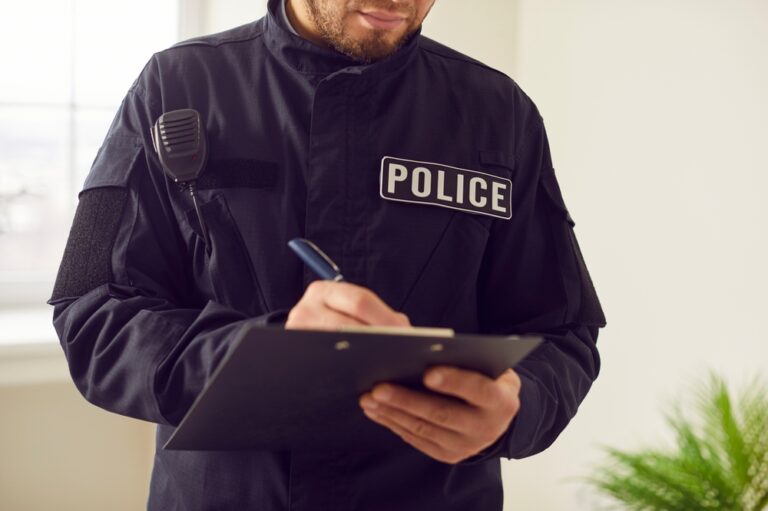
Many police officers experience terrible, traumatic events in the line of duty. A significant number of police officers…